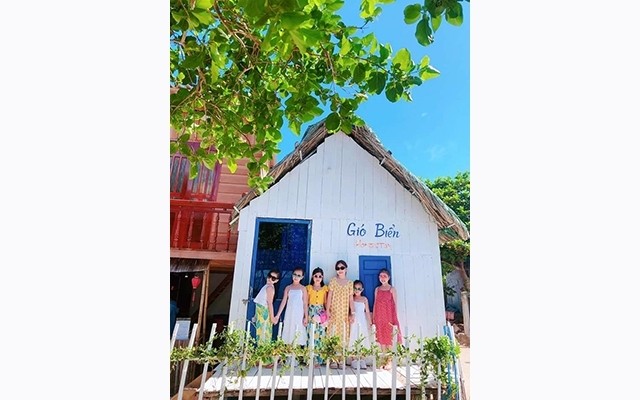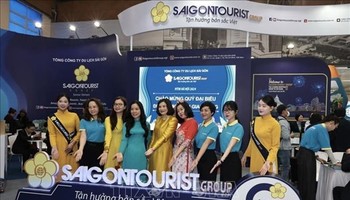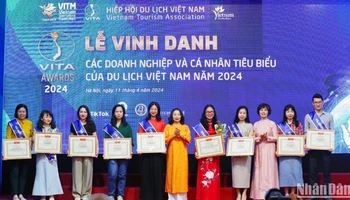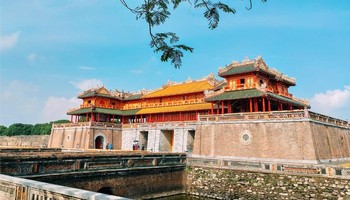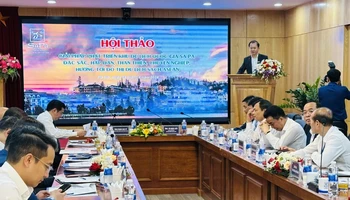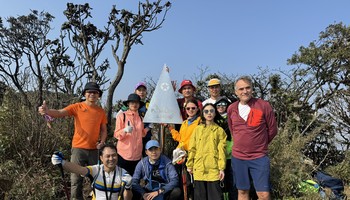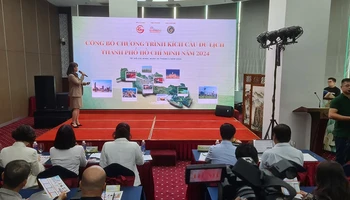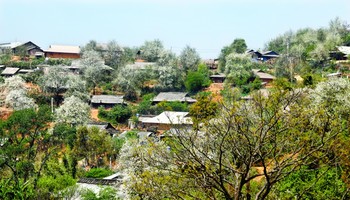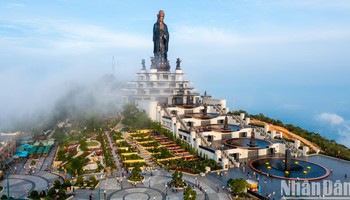The homestays have gradually become an interesting highlight for both domestic and foreign tourists.
From the Be Island wharf, visitors can take trams along the coast to enjoy the wind and salty taste of the sea mixed with the aroma of the land. The unique homestays, which were designed and built by local people from the island, are hidden under the green coconut palms. Gio Bien (Sea Wind) is one of the first homestays here. The wooden stilt houses facing the sea welcome the guests to what will be many unforgettable moments. The homestay’s owner, Nguyen Van Duc (1992), ignored many job offers in Ho Chi Minh City to start his career in his hometown. About 5 years ago, Be Island began attracting visitors but they only came to see the scenery, not to stay overnight. At that time, the small motels in the area were not attractive enough to lure visitors. Nguyen Van Duc was determined to bring a homestay model to his homeland and in July 2017, Gio Bien officially came into operation.
He said that Ly Son’s Be Island has attracted a large number of visitors thanks to the pristine beauty of the nature and purity of the environment. Accordingly, the local homestays aim to be environmentally friendly and in harmony with the inherent beauty of the landscape. That is why the rooms in Gio Bien were designed to minimise the appearance of concrete and artificial materials. In front of the homestay, Duoc developed a coastal camping model with various activities such as campfires and barbecue parties to entertain customers. The young man’s vision and efforts have been bearing fruit as there are now more and more visitors to Gio Bien. The homestay welcomed over 900 guests in 2018 and over 1,000 in 2019. In fact, during high season (from May to September every year), Gio Bien does not have enough rooms to meet visitors’ demand.
Alabin homestay, which was founded in 2017 and is located not far from Gio Bien, is managed by a young businessman Bui Minh. It features lovely rooms built in pine wood stilted houses with roofs made of coconut leaves. A cool garden with many typical local fruit trees from Ly Son island is in the middle of the homestay. From the balcony of Alabin, visitors can capture the beautiful scenery of Be Island with the many deposits of the ancient volcanoes and its clear sea water. Alabin has now four rooms in different areas that can meet the demand of families and group travellers.
Being a freelance guide, Bui Minh has much experience in communication and tour development. He also provides guests with tours catering to different segments, such as male and female tourists and those who can and cannot swim. For example, male visitors can go fishing, while female ones go on long walks to catch snails and pick seaweed.
Minh said the environmentally friendly materials make the landscape beautiful but their durability is low. In the last flood season, Alabin homestay was damaged heavily due to strong wind and rain. Therefore, Bui Minh planned to revamp his homestay to ensure its durability while maintaining its harmony with nature. The homestay was strengthened with corrugated metal sheet roofs that are covered by leaves. The walls are reinforced with lava rocks and sea shells to create a unique beauty. Alabin received around 1,000 guests in 2018 and 1,400 in 2019. Bui Minh also plans to recruit more people who know foreign languages to serve more international visitors.
Currently, there are around ten homestays in Be Island and most of them are managed by young people. Their creativity and desire to enrich their homeland as well as their awareness of maintaining beautiful landscapes and protecting the environment have created new energy and impetus for the sustainable development of the island.
